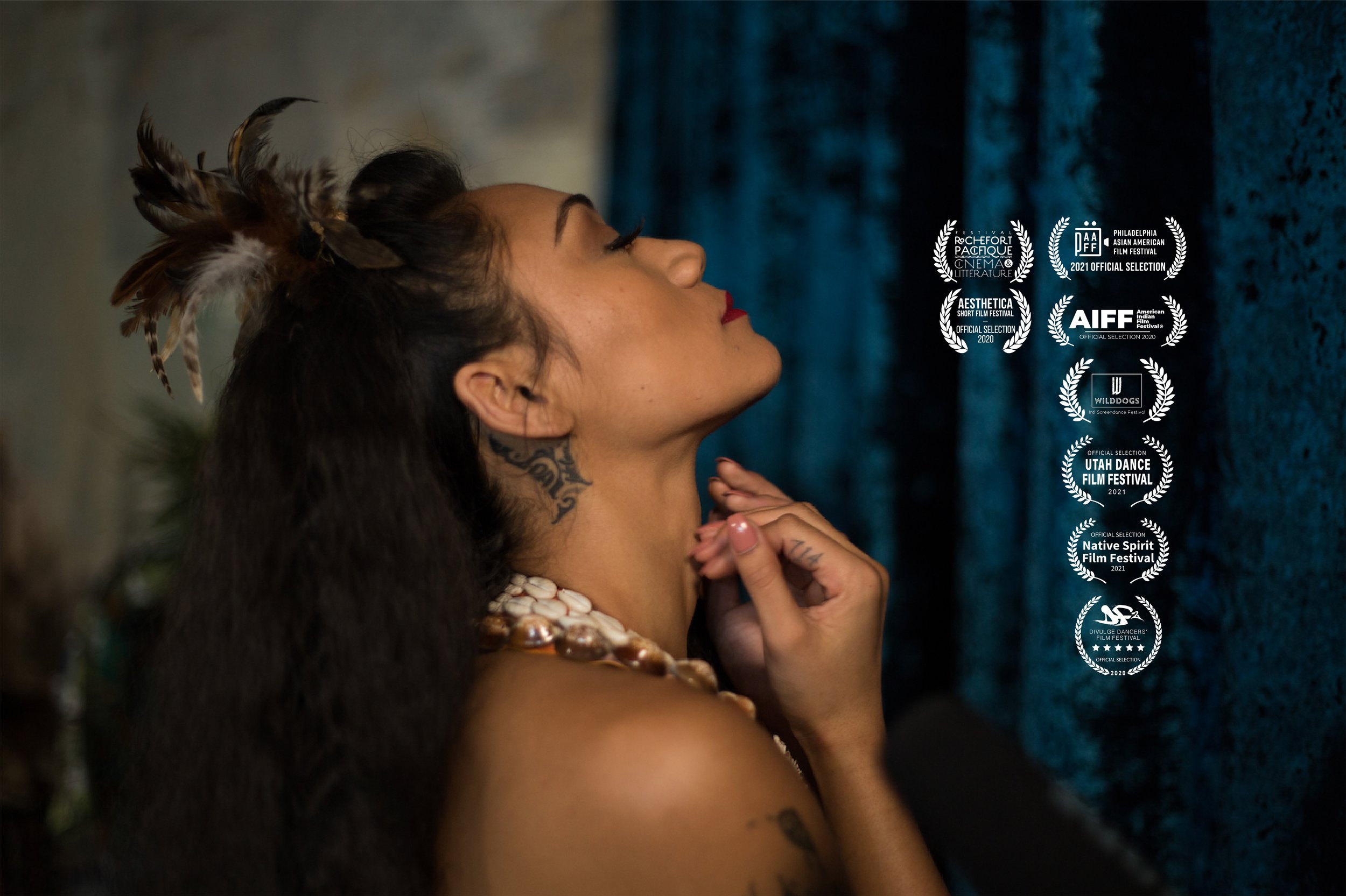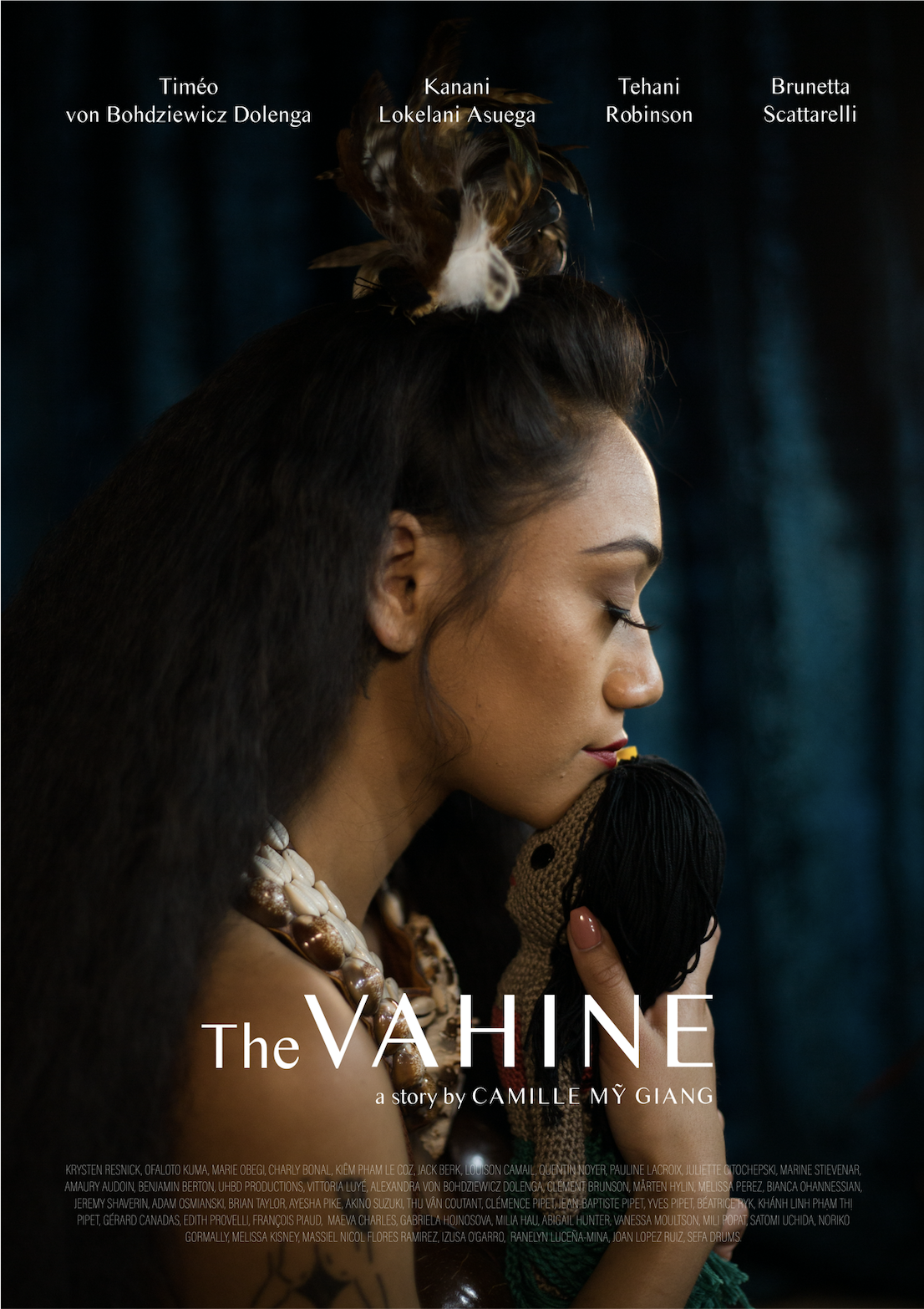
Synopsis.
A surprising and unconventional danced sign language brings together a deaf boy and a Tahitian dancer through an unexpected path of encounter.
About the film.
The Polynesian traditions of oral transmissions fuel the core center of our story. The film particularly uses a Tahitian style of dance called ‘aparima, where the motions (‘apa) of the arms and hands (rima) tell stories through slow and graceful movements. To the eyes of the listeners, the ‘aparima have therefore everything of beautiful and surprising, danced sign languages.
Screenings and festival attendances.
4-8 November 2020
Aesthetica
Short Film
Festival
York, UK
6-14 November 2020
American Indian
Film
Festival
San Francisco, US
11-13 Decembre 2020
Divulge
Dancer’s
Film Festival
Los Angeles, US
1-4 February 2021
Film Market
Clermont FilmFest
Clermont-Ferrand, FR
Film Specs
Title | The Vahine
Year | 2020
Language | English, French & French Sign Language
Running time | 15 minutes
Aspect ratio | 1,33:1
Country of production | France & United-Kingdom
Director’s statement.
The stories depicted in Polynesian dances are usually taken from daily traditional occupations or ancient myths of the Pacific, which make them emblematic flagship carriers of both its ancient and modern identities. To most Polynesian people, dancing therefore goes far beyond the bare physical experience. The spiritual aspect of this art form invites the performers to become a connecting entity between the immaterial and the tangible, between the inner and the outer, between the sacred and the common. Not only do dancers bring the audiences to make one with their culture, they also create for themselves a sacred pathway towards their roots and Fenua (motherland).
As a storyteller myself I became obsessed with the endless poetry bared in these dances and began dedicating my energy to sharing them with the greater people possible. Unfortunately, my good intentions quickly hit themselves to the walls of the outer world’s awareness and I grew to understand the tremendous gap existing between reality and perception. I sadly came to identify the source of this disconnection in the shortage of stimulus, but also (and mostly), in the availability of incomplete representations.
At the same time and in its very own way, the deaf community was facing the exact same issues. Because its cultural specificities clearly fell outside of the easy and well-traced path of mainstream understanding, this community was facing a phenomenon they jokingly (yet firmly) called « the dictatorship of the verbal communication. » To most eyes, deaf culture only seemed available through a certain form of facilitation, and more importantly only appeared visible to the ones blessed with the patience to pay attention to it. From this situation arose a definite alienation which, I was convinced, was not desired by either side of the discussion. Once again, it was clear to me that the gap between reality and perception could be bridged by a diversification of cultural entry points. Representation indeed matters.
This is how the film came to be. Together with these two communities, we intended to renew the depictions of their identities and painted an ode to what united them together: non-verbal communication. Through this cinematic experience, we created a space where audiences are invited to challenge their senses as they are provided with an opportunity to « look again,
and look closer. »
“Ma’uera’a”
Hear the song that was specially made and tailored to welcome
this beautiful encounter.
Produced by | Sefa DRUMS
Composed by | Ofaloto KUMA
Written by | Camille MỸ GIANG & Noëlle FAAHU-VAKI
Choreographed by | Kanani LOKELANI ASUEGA
Press
“Quand je l’ai vu sur grand écran pour la première fois, j’ai été très émue. Quand j’ai entendu les hīmene, vu la danse, ressenti notre histoire, c’était fort. Il n’y a pas ou très peu de fictions qui montrent la culture tahitienne de cette manière. En général, ce sont des documentaires” rapporte Tehani Robinson.
Pour elle, ce court-métrage abonde dans le sens du respect de la culture polynésienne, "de ce qu’elle vaut vraiment". La plupart du temps, Tehani Robinson trouve que la culture polynésienne est présentée comme du "folklore plein de clichés dont on s’amuse". Elle ajoute : "je me suis trop longtemps heurtée au non-respect de certains pour ma culture".
"J'étais soulagé parce que tout le monde s'est adapté à moi, j'étais très content de cette expérience-là. La danse m'a beaucoup touché, c'était très beau. En fait, on dirait comme une autre langue des signes. C'est le corps et les mains qui expriment, c'est proche du chansigne. J'ai senti les vibrations, c'était agréable, alors que je vis sans repères sonores. J'ai ressenti une émotion très riche, puissante, c'était beau, j'étais surpris."


